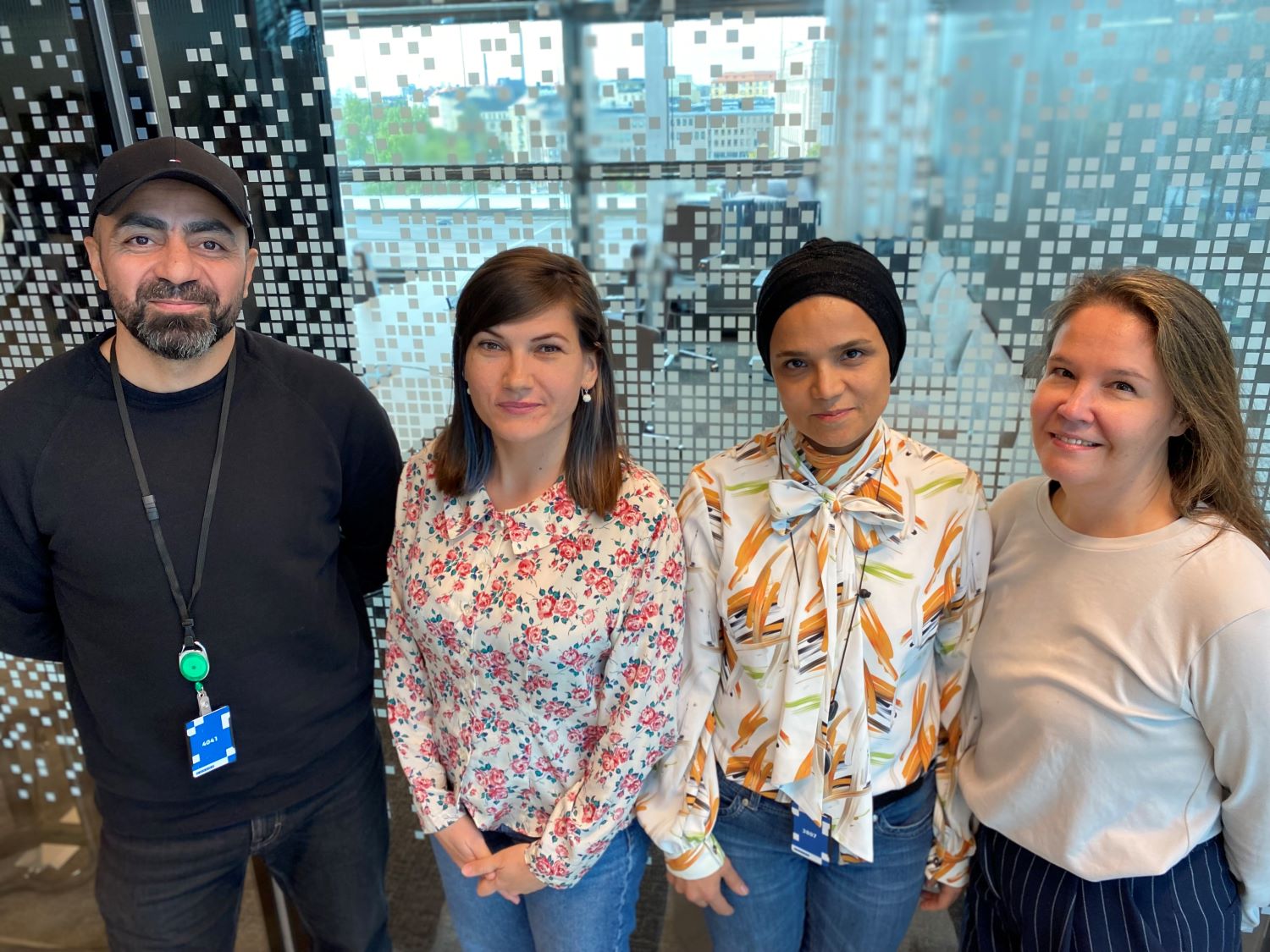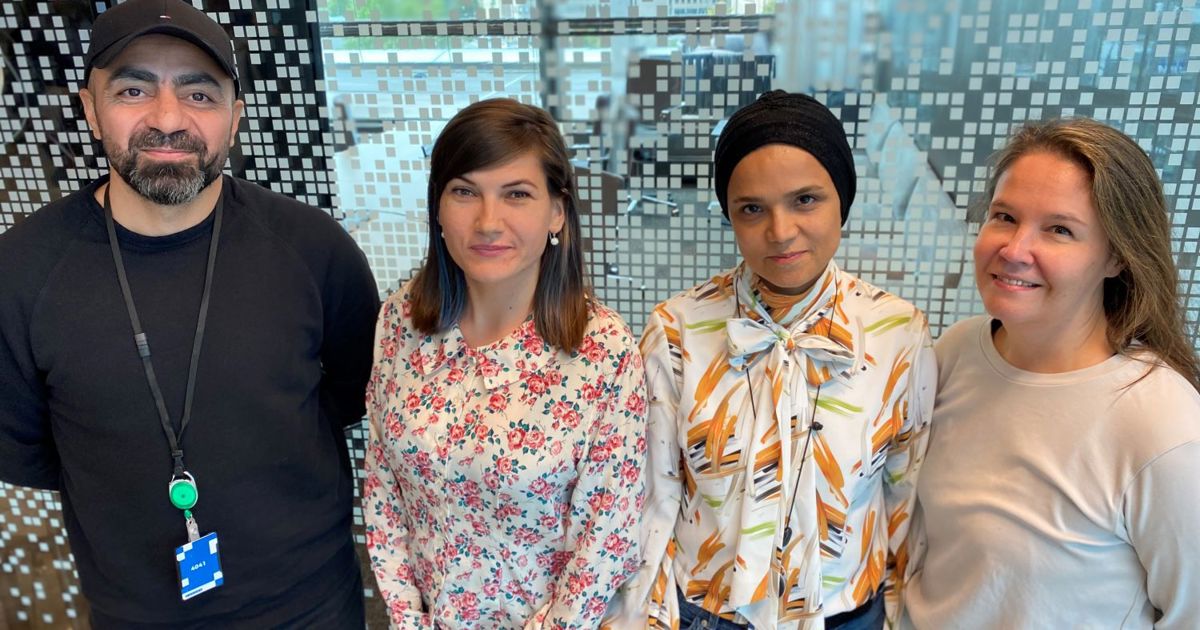
Helsingin Sanomat is involved in the internship part of Haaga-Helia’s training programme for immigrant journalists. The training programme began in March, and internships in editorial rooms shortly after that.
Tuija Pallaste, producer at the international news desk of HS, will be the mentor of the journalist interns. The internship lasts for six months, during which time the interns will spend half of their time in the editorial room, the other half at school.
Sarkawt Rstem from Iraq and Hamide Sedaghat from Iran will do their internships at the international news desk under Pallaste’s guidance. Ukrainian Yevheniia Tsarenko works in the city editorial room, with supervisor Lari Malmberg in charge of the intern’s programme.
The interns have worked as journalists in their home countries and the immigrant community in Finland, but lack experience in Finnish media.
It is this, the significance of media in Finland, that is of interest to Sarkawt Rstem.
“The content is more direct and realistic here than in Iraqi media. I also want to learn about the public’s attitudes towards journalism,” Rstem says.
He has been working in Finland since 2015 and for years for an Iraqi satellite channel and an Iraqi news agency.
They all three have one shared aim: to get to tell Finns about the affairs of their own countries.
“It is nice to be here, and my expectations of the training and internship have already been exceeded. In my articles, I want to tell Finns about Ukraine, and especially Ukrainians living in Finland, not just those who have come here because of the war,” Yevheniia Tsarenko says.
“Haaga-Helia’s training programme is an opportunity for both us and the Finnish society. I want to be an agent of my own culture,” says Hamide Sedaghat.
For a long time, Sedaghat worked for a news agency in Iran as a journalist specialising in energy, and ultimately established an online media service focusing on energy sector news of her own. She came to Finland to study at the University of Tampere in 2020. She has been administering the Persian-language channel Finland Daily on Instagram.
The first week of the interns included orientation.
Tsarenko speaks fluent Finnish, but Rstem and Sedaghat work in English. The possibilities of using artificial intelligence to help overcome the language barrier are also investigated at the beginning of the internship.
Rstem and Sedaghat are working on columns that they write in their native tongues and translate using an AI application. The texts are reviewed together with Pallaste so that the outcome will truly reflect the authors’ thoughts and voice as well as the standards of HS.
“We are a Finnish-language media, but we cannot be exclusively Finnish-speaking as a working community. The purpose of this project is to also look at how work in the editorial room is organised when the workers speak different languages. I have worked previously with Ukrainian and Russian freelancers with good experiences,” Pallaste says.
One of the goals of the cooperation is to perceive how Helsingin Sanomat could have a more diverse editorial team with expertise in key immigrant groups and the countries they come from as well.
